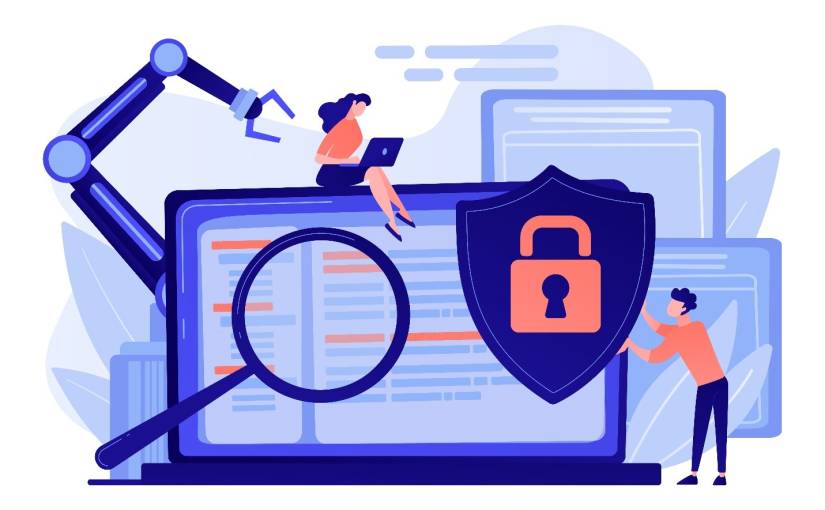With the explosion of digital communication, businesses must prioritize email security. There are numerous threats to email accounts and email-based communications. Thus, understanding the complexities of email security is crucial for modern businesses.
What Is Email Security?
Email security is a multi-faceted concept that encompasses various measures used to secure access to an email account and content. It’s about protecting sensitive information from unauthorized access, loss, or compromise. With the increasing amount of sensitive data being transmitted via email, businesses need robust email security measures.
The importance of email security encompasses the protection of sensitive data and enhancing overall internet security. Email is one of the primary modes of communication, making it a popular target for cybercriminals. Securing email communications is a vital step in protecting your business online.
Email security comprises three fundamental components: confidentiality, integrity, and availability. Confidentiality ensures that only the intended recipient can access the email content. Integrity ensures that the content remains unaltered during transmission. Availability ensures that the email system is always up and running, ready for use.
Consequences of Email Security Breaches
Financial Loss
An email security breach can lead to significant financial losses. Cybercriminals can exploit compromised email accounts to launch sophisticated phishing attacks, tricking victims into revealing sensitive financial information. Unauthorized access to business emails can also expose confidential company data, leading to substantial business disruption and financial loss.
The cost of responding to an email security breach can also be substantial. This includes the expenses associated with identifying and fixing the vulnerability, recovering lost data, and implementing new security measures. In serious cases, companies might need to hire cybersecurity experts and legal counsel.
Data Loss and Theft
Data loss and theft are among the most severe consequences of an email security breach. Sensitive personal or business information can be stolen and used for illegal activities. Personal data can be used for identity theft, while business data can be exploited for competitive advantage.
Data loss can also occur if cybercriminals gain access to an email account and delete important emails or attachments. This could disrupt business operations, mainly if the lost data includes critical business information or customer records.
Reputational Damage
If customers or clients learn that their personal information is compromised due to inadequate email security, they might lose trust in the company. This could lead to a decline in customer loyalty and a decrease in business.
The news of an email security breach can negatively impact a company’s public image. It might make potential customers or partners think twice before doing business with the company—your online reputation matters so a breach could have long-lasting consequences.
Legal and Regulatory Consequences
Companies also face potential legal and regulatory consequences following an email security breach. Laws and regulations around data privacy and protection require companies to protect personal information. If a breach occurs, companies may face legal actions from affected individuals or regulatory penalties from government bodies.
For example, under the General Data Protection Regulation (GDPR), companies can be fined up to 4% of their annual global turnover for serious data breaches. Other regulations, like the California Consumer Privacy Act (CCPA), also have hefty penalties for non-compliance.
Top 5 Email Security Threats [SQ]
Phishing Attacks
In a phishing attack, cybercriminals impersonate a legitimate entity to trick victims into revealing confidential information. The information obtained can be used for various malicious purposes, including identity theft and financial fraud.
Phishing emails often look convincing, with professional-looking logos and language that mimics the style of the entity being impersonated. However, they usually contain subtle clues that can help discerning users identify them as fraudulent.
Malware and Ransomware Distribution
Email is a popular distribution channel for malware and ransomware. Malware is malicious software that can disrupt computer operations, gather sensitive information, or gain unauthorized access to computer systems. Ransomware is a type of malware that encrypts a victim’s files and demands a ransom payment to restore access.
Cybercriminals often use email attachments or links to spread malware or ransomware. Once the recipient opens the attachment or clicks on the link, the malicious software is downloaded and installed on their device.
Business Email Compromise (BEC)
Business Email Compromise (BEC) is a sophisticated scam targeting businesses that conduct wire transfers. In a BEC attack, cybercriminals impersonate a high-ranking executive or business partner to trick employees into transferring funds to a fraudulent account.
BEC attacks are typically well-researched and highly targeted. They often involve significant amounts of money, making them one of the most financially damaging email security threats.
Spam and Unwanted Content
Spam emails and unwanted content are nuisance threats that can clog up email inboxes and waste users’ time. While not as damaging as other threats, they can still pose security risks. For example, spam emails can contain malicious links or attachments or be used for phishing.
Dealing with spam and unwanted content can divert resources from more critical tasks. It can also lead to legitimate emails being overlooked or deleted accidentally.
Email Spoofing and Identity Theft
Email spoofing involves the forgery of an email header to make it appear as if the email came from someone other than the actual source. Cybercriminals use this technique to trick recipients into thinking the email is from a trusted source, making them more likely to open it and follow any instructions it contains.
Email spoofing is often used in phishing attacks and BEC scams. It’s also a standard method for spreading malware. It can lead to identity theft if personal information is revealed in response to a spoofed email.
How to Protect Your Business from Email Attacks
Email Encryption and Secure Communication
Encryption can help protect sensitive information in transit. It ensures that even if an email is intercepted, the content remains unreadable to anyone without the decryption key. Secure communication protocols like Secure Sockets Layer (SSL) and Transport Layer Security (TLS) can also provide an additional layer of security.
Secure email gateways can provide comprehensive email protection. They can scan all incoming and outgoing emails for threats, enforce data loss prevention policies, and provide encryption and secure delivery options.
Regular Monitoring and Incident Response
Regular monitoring can help detect any unusual activity indicating an email security breach. For instance, sudden spikes in email traffic or an increase in bounced emails could signal a compromised email account.
An incident response plan can ensure a swift and effective response to security incidents. It should outline the steps to take in the event of a breach, including isolating affected systems, identifying and mitigating the vulnerability, and notifying relevant parties.
User Training and Awareness
Even the best security solutions can be bypassed if users are unaware of the risks and how to avoid them. Regular training sessions can help users understand the latest threats and how to identify and report suspicious emails.
Users should be encouraged to adopt safe email practices. This includes refraining from opening unexpected attachments, clicking on links in suspicious emails, or sharing sensitive information via email.
Implement Robust Email Security Solutions
Implementing robust email security solutions is the first line of defense against email attacks. This can include spam filters, anti-malware software, and phishing detection tools. These solutions can help identify and block malicious emails before they reach the user’s inbox.
Advanced email security solutions can provide features like link protection and attachment sandboxing. Link protection can check the safety of links in real-time, while attachment sandboxing can analyze attachments in a secure environment to detect any malicious behavior.
Conclusion
As we have seen, email security is a critical aspect of internet security. Understanding the potential threats and implementing effective protection measures can help safeguard your personal and business communications in the digital age. Every email you send or receive is a potential vulnerability, so it’s essential to be aware of the threat and build an email security strategy.
Featured Image Credit: Provided by the Author; Thank you!


















